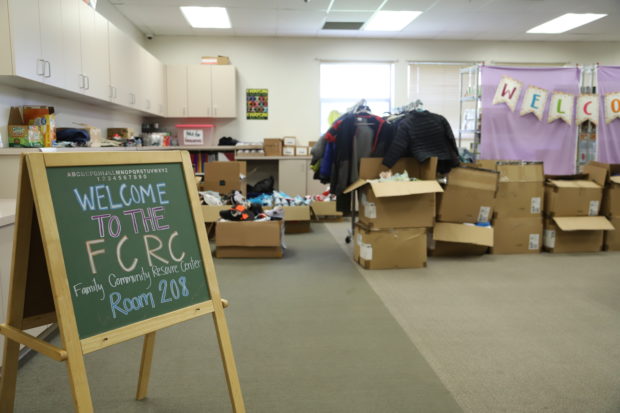This is the last story in a three-part series about how Idaho’s homeless children and families faced unique challenges in the past two years. This series spotlights how Idaho educators are making extraordinary efforts to meet their needs. Here are the first and second stories.
Idaho school districts and charters have new funds this year to help students experiencing homelessness.
The federal government allocated $2.8 million for Idaho schools to help homeless youth, through two rounds of COVID-relief funding. Districts across the state put the first chunk of money toward tutoring programs, mental health counseling and transportation.
Plans for the second round of funds are still evolving. The State Department of Education was still waiting for the federal government to approve plans for its share of the funding in late October. Some school districts have opted out of receiving funds, and others are trying to chart the best plan for the money’s long-term use.
“This is a real opportunity to make some lasting improvements,” said Angie Harker, a McKinney-Vento liaison in the American Falls School District. “I’m trying to be careful and considerate about how we use these funds.”
Congress gave U.S. Secretary of Education Miguel Cardona $800 million dollars this year as part of the American Rescue Plan, earmarked specifically to help identify and support homeless youth after the pandemic. Advocates say that’s more money than all of the funds congress has appropriated for homeless youth over the past 10 years, combined.

“Even before the coronavirus pandemic highlighted and exacerbated inequities in America’s education system, students experiencing homelessness faced numerous challenges as they strove to learn and achieve in school each day,” Cardona said in a news release from the U.S. Department of Education. “Amid COVID-19 and the transition to remote and hybrid learning, for so many students, these challenges intensified.”
In Idaho, climbing home prices added to families’ challenges. Homeless education coordinators across the state report families are increasingly priced out of rentals, and that once a family becomes homeless, it’s increasingly difficult to get rehoused.
States and districts can use the new money to identify homeless students, help them participate in school activities, and to provide wrap-around services that help them thrive in and out of school.
Schools had to apply for the first round of homeless funds. Only 34 of 170-plus districts and charters did. Here’s how some of them will use the $720,000 the SDE handed out:
- Emmett School District is in the process of bringing an on-site mental health counselor into schools. The district plans to use some of its funds to cover therapy costs for homeless students who do not have insurance.
- Boise School District will use funds to supplement funding for transportation, gas cards, and emergency housing, as well as pre-paid cell phones to help homeless students and their guardians stay in contact with schools.
- Parma School District will give supplemental stipends to counselors for providing additional help for homeless students, and supplement the pay for a community engagement facilitator to help coordinate wrap-around services for kids.
- Vallivue will use funds to send district administrators to a national conference about how to best serve homeless youth, and supplement the district’s budget for paying for food, clothes, transportation or emergency hotel stays.
Find the full list of how districts are spending these funds here.
There’s a second round of funding just rolling out.
The SDE got 25% of these funds, and was planning to get the remaining $1.6 million handed out to districts before Oct. 30.
In an application to the feds, the SDE said it plans to spend $540,560 on projects like a new data dashboard to help the state and districts monitor the progress of homeless youth. The department will also give grants to housing coalitions and Idaho community schools collaboratives to help facilitate services for kids and families experiencing homelessness.
Districts and charters will get the remaining 75% of the funds, and will have to send a brief description of their spending plans to the state.
Jessica Baksis, the McKinney-Vento coordinator in Bonneville, said her district will use federal funds to pay for medical needs for families, including dental visits and eye doctors appointments. Harker, in American Falls, is brainstorming possible mental health partnerships with the local community, or transportation for homeless students to get to preschool programs. The Nampa School District will use homeless funds, as well as other pandemic relief money, to add more members to the McKinney-Vento team, homeless education liaison Natalie Sandoval said.
Districts are grateful for the funds. But they also recognize their limits: Education dollars are not going to solve the affordable housing crisis that is displacing families around the state.
“It’s going to have to be community and government that step up to the plate,” Harker said.
